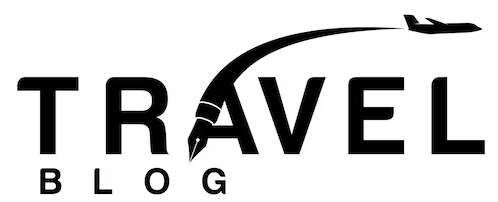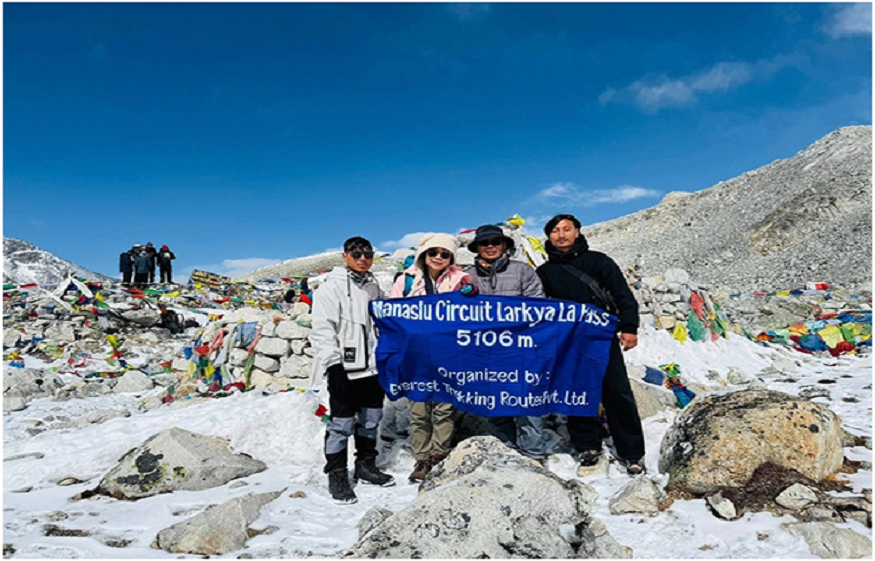Nepal, a place where the mountains puncture the sky and old conventions breathe through each stone town, remains one of the world’s most captivating trekking destinations. Whereas Everest regularly rules the highlight, genuine climbing paradise lies in Nepal’s calmer corners—trails that weave through rich valleys, farther Himalayan passes, and ageless societies. For trekkers who look for realness, isolation, and breathtaking view, four standout courses offer unparalleled encounters: the 5-Day Langtang Valley trek, the farther and magical Nar Phu Valley trek, the emotional Manaslu Circuit trek, and the classic, however advancing Annapurna Circuit Trek.
These trails aren’t fair ways through the Himalayas—they are treks into Nepal’s heart. Each one is a trek into the wild, legacy, and individual change. From the brief but serious excellence of Langtang to the windswept passes of Manaslu and Annapurna, these treks shape the center of Nepal’s lesser-explored ponders. Let’s climb through each, one stride at a time.
Langtang Valley trek (5 Days):
For trekkers with restricted time who still pine for a crude Himalayan encounter, the 5-days Langtang Valley trek is a compact travel bursting with magnificence. Found a fair 7-8 hours’ drive north of Kathmandu, Langtang is regularly eclipsed by greater names, however it conveys on all fronts: sensational scenes, profound social experiences, and quiet trails.
The trek starts in Syabrubesi, winding through thick oak and rhododendron woodlands. The Langtang National park is a biodiversity sanctuary, domestic to ruddy pandas, Himalayan dark bears, and incalculable fowl species. Climbing relentlessly, the path leads to charming Tamang towns such as Lama Lodging, Langtang Town, and Kyanjin Gompa, where Buddhist supplication banners vacillate against the towering scenery of Langtang Lirung (7,227m).
The highlight is the discretionary climb to Tserko Ri (4,984m), which offers 360-degree views of snow-capped peaks and ice sheets. The Langtang region, crushed amid the 2015 seismic tremor, has since modified much of its foundation. Trekking here not as it were fills your soul but underpins a strong community revamping with hope.
With cozy teahouses, inviting local people, and a reasonable elevation profile, this trek is perfect for fledglings or those looking for a speedy however exceptional Himalayan adventure.
Nar Phu Valley trek:
If Langtang presents you to the Himalayas, the Nar Phu Valley trek drenches you in an overlooked world. Tucked between the Annapurna and Manaslu districts, this limited region was opened to trekkers as it were in 2002. It is one of Nepal’s most inaccessible and socially wealthy trekking courses, advertising an intriguing mix of old Tibetan legacy, fortress-like towns, and dazzling landscapes.
Starting from Koto close to Chame (on the Annapurna Circuit), the path veers north into the Nar Khola Valley, rapidly getting to be a way distant evacuated from advanced civilization. Passing through contract gorges and pine timberlands, trekkers slowly rise to the towns of Phu and Nar, both arranged over 4,000 meters.
These towns, built from stone and encompassed by fruitless cliffs, are social time capsules where life remains generally unaltered for centuries. Antiquated cloisters, complex supplication wheels, and yak caravans dab the path. The sense of segregation is significant, however profoundly grounding.
The trek comes full circle in the challenging crossing of Kang La Pass (5,322m), where a clearing display of the Annapurna extend is standing by. The plummet interfaces you back to the Annapurna path, making a idealized combination of father experience and classic trekking.
The Nar Phu Valley trek is perfect for prepared trekkers looking for isolation and social inundation. A limited range allowed and authorized guide are obligatory, but the exertion pays off with one of Nepal’s most true and untouched experiences.
Manaslu Circuit trek:
The Manaslu Circuit trek circles the magnificent Mt. Manaslu (8,163m), the world’s eighth-highest mountain, stands as one of Nepal’s most exciting long-distance climbs. Regularly compared to the Annapurna Circuit of decades past, Manaslu offers a more out of control, less commercialized encounter filled with jaw-dropping view and a profoundly established Himalayan culture.
The path starts in Soti Khola and takes after the thundering Budhi Gandaki Stream through lavish woodlands, cascading waterfalls, and cliff-side ways. As you climb higher, the landscape changes into elevated wilderness, stamped by cold waterways and rough outcrops.
Villages such as Namrung, Lho, Samagaon, and Samdo present trekkers to the region’s Tibetan impact, total with chortens, mani dividers, and antiquated religious communities like Pungyen Gompa. Time moderates down here, permitting trekkers to assimilate the otherworldly climate and crude excellence of their surroundings.
The physical and typical peak of the trip is the Larkya La Pass (5,106m). Crossing it is no simple feat—especially in snow—but the sea from the beat is worth each breathless step. You’ll witness a skyline overwhelmed by peaks like Himlung, Cheo, and Annapurna II some time recently slipping into the Marsyangdi Valley.
Though inaccessible, the Manaslu Circuit is consistently developing in ubiquity. Be that as it may, due to its limited status, it requires an extraordinary permit, an authorized guide, and a bunch of at least two trekkers (unless organized through a trekking agency).
This trek is culminated for globe-trotters who need a multi-dimensional involvement that incorporates emotional nature, requesting physical effort, and significant social encounters.
Annapurna Circuit trek:
The Annapurna Circuit trek is maybe Nepal’s most notorious long-distance course, and for great reason. Traversing an endless area of central Nepal, this path grandstands about each sort of landscape and culture the nation offers—from wilderness to tall elevated leaves, from Hindu swamps to Tibetan highlands.
Traditionally beginning in Besisahar, trekkers rise along the Marsyangdi Waterway, climbing consistently toward high-altitude towns such as Chame, Manang, and Yak Kharka. The trek comes to its sensational climax at the Thorong La Pass (5,416m)—one of the most elevated trekking passes in the world. From here, the course slips into the sacrosanct town of Muktinath, venerated by both Hindus and Buddhists.
The excellence of the Annapurna Circuit is its flexibility. Side trips to Tilicho Lake, the Ice Lake, or indeed a Nar Phu expansion are effortlessly included for those with time. Whereas street development has affected a few areas, elective trails and modern teahouses offer assistance to keep up the classic trekking feel.
Trekkers will experience an astonishing social assortment: Gurung, Magar, Manangi, and Thakali communities, each advertising interesting nourishments, tongues, and conventions. The dry Bronco region close to Jomsom gives a Tibetan forsake feel, whereas the hot springs of Tatopani give well-earned rest.
Though more created than other courses on this list, the Annapurna Circuit remains a top-tier trek for those looking for differences in scene and culture. It’s well-supported, adaptable in length (10–21 days), and appropriate for both solo travelers and guided groups.
Why These Treks Stand Out: Inaccessible, Crude, and Real
Each of these treks—Langtang, Nar Phu, Manaslu, and Annapurna—offers an unmistakable character:
- Langtang is tranquil and available, wealthy in culture, and perfect for shorter trips.
- Nar Phu is inaccessible and otherworldly, with untainted Tibetan villages.
- Manaslu is tough and epic, combining nature’s extremes with significant social experiences.
- Annapurna is flexible, memorable, and immersive, an adjusted presentation to the Himalayas.
What interfaces them all is the sense of virtue. Not at all like excessively commercial trails, these courses still feel sacrosanct, their towns bona fide, their peaks untainted. They give what numerous travelers are genuinely looking for: quiet, space, and self-discovery.
Trekking Mindfully: Grants, Guides, and Preparation
Nepal values its trekking legacy and has built up frameworks to protect both nature and neighborhood communities. Here’s what you require to know some time recently setting out:
Permits Required
Langtang trek: TIMS card + Langtang National park Permit
- Nar Phu: Limited Region Allow (RAP), Annapurna Preservation Range Allow (ACAP), TIMS, and an authorized guide
- Manaslu Circuit: RAP, Manaslu Preservation Zone Allow (MCAP), ACAP, and an authorized guide
- Annapurna Circuit: ACAP + TIMS card
When to Go
Best Seasons: Spring (March–May) and Harvest time (September–November)
- Winter: Unforgiving and frigid, particularly on passes
- Monsoon (June–August): Not ideal—slippery trails and leeches in lower regions
Packing Essentials
Down coat, downy layers, and warm wear
- Sturdy climbing boots and trekking poles
- Water refinement tablets or filter
- Sleeping pack (appraised to -10°C or colder)
- Sunscreen, shades, gloves, cap, and individual to begin with help kit
Always enlist neighborhood guides and doormen if you can—they include priceless understanding and give financial back to mountain communities.
Conclusion:
For those in the look of climbing paradise, Nepal conveys not in the swarms of Everest, but in the calm trails that reverberate with supplication wheels and the crunch of snow underneath. The Langtang Valley, Nar Phu, Manaslu Circuit, and Annapurna Circuit courses are more than treks—they are encounters of otherworldly profundity, social lavishness, and jaw-dropping normal beauty.
These are trails for those who walk not fair to reach a goal, but to lose themselves and discover something more noteworthy. To breathe more slender discussion and clearer contemplations. To share tea with ministers in stone religious communities and look at peaks that oppose imagination.
Nepal’s farther trails are not fair for the few—they are holding up for anybody willing to take the to begin with step into the obscure. So bind up your boots, whisper a supplication underneath the vacillating banners, and start your walk into Himalayan wonder.
FAQs
- Is the Langtang Valley trek appropriate for families or beginners?
Yes, the 5-day trek is idealized for those with restricted time or encounter, advertising sensible territory and fabulous views.
- How farther is the Nar Phu Valley Trek?
Extremely remote—it’s one of Nepal’s least-touched regions, with negligible framework and a genuine wild feel.
- Is acclimatization troublesome on the Manaslu Circuit?
It requires cautious acclimatization due to tall passes. A rest day in Samagaon is profoundly recommended.
- Can I trek to Annapurna Circuit solo?
Yes, solo trekking is allowed, but contracting a guide upgrade security and encounter, particularly with elective routes.
What’s the most beautiful area of the Annapurna Circuit?
The climb from Manang to Thorong La and the plummet into Muktinath are among the most picturesque and fulfilling areas.
Contact:
Company address: Everest Trekking Routes Pvt. Ltd.
16 Khumbu, Nayabazaar, Kathmandu, Nepal
Mobile : +977-9843467921 (Rabin)
Email: [email protected]
URL:- www.everesttrekkingroutes.com

